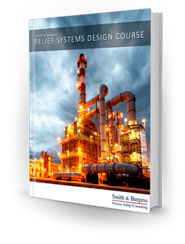Relief Systems Design Training Course
OSHA’s 29 CFR 1910.119 Process Safety Management of Highly Hazardous Chemicals promulgated the requirement that operators (refineries, petrochemical and chemical plants) maintain accurate and current process safety information (PSI). One of the key elements under Process Safety Information is relief system design and design basis. In addition, operating companies' internal corporate standards require them to demonstrate that they protect their processes against overpressure hazards and that they rigorously evaluate the design of the pressure relief systems providing that protection.
This intensive three-day course provides a comprehensive overview of relief and flare systems that will help process safety engineers and managers prepare to meet key elements of the standards by presenting proven best practices and methodologies for overpressure scenario identification and relief device sizing. The course demonstrates a step-by-step pressure relief design, based on Recognized and Generally Accepted Good Engineering Practices (RAGAGEP), including API STD 520/521/2000 and ASME BPVC Section VIII/Section I.
The course includes the following:
- Application of API 520/521/526/2000/650/620/12, ASME I/VIII/XIII/B31.3/B31.1
- Importance of pressure relief systems documentation and OSHA requirements
- Overpressure protection design philosophy
- Comparison of relief device types
- Data required
- API 521 and API 2000 overpressure scenarios
- Required rate calculations
- Relief device sizing
- Installation RAGAGEP
- Overview of flare and atmospheric disposal systems
- Covers process vessels, heat exchangers, pipes, rotating equipment, boilers, and low pressure and atmospheric storage tanks
- 5 in-course workshops using equations and methods from standards
- Relief device chatter demonstration at our R&D facility
Course Instructor

Thuc Ngo, P.E. is a licensed chemical engineer with over 12 years of experience in relief and flare systems design, revalidation, concern resolution, and atmospheric dispersion for upstream, midstream, downstream, and chemical plant operations. She has led and executed over 100 national and international projects, bringing her extensive technical knowledge and practical insights to our Relief Systems Design Training Course.
Course Itinerary
This course will take place at our corporate headquarters in Houston, TX.
Day 1: Tuesday, October 15th (8:00 am - 5:00 pm)
- Breakfast
- Introduction
- Overview of Standards / Relief Devices
- Overpressure Scenario Identification & Scenario Explanations
- Lunch Break
- Workshop Exercises: Scenario Identifications
Day 2: Wednesday, October 16th (8:00 am - 5:00 pm)
- Breakfast
- Overpressure Scenario Calculations
- Workshop Exercises: Scenario Calculations
- Lunch Break
- Workshop Exercises: Scenario Calculations (cont.)
- Relief Device Sizing
- Workshop Exercises: Relief Device Sizing
- Boilers
- Workshop Exercise: Boilers
Day 3: Thursday, October 17th (8:00 am - 2:30 pm)
- Breakfast
- Low Pressure Tanks
- Workshop Exercise: Low Pressure Tanks
- Installation and Disposal Systems
- Lunch Break
- Lab Demonstration
- After lunch, the class will visit our R&D location to view a demonstration of a stable and unstable relief valve as well as disassembly and reassembly of a relief valve.
Pricing
The cost of the 3-day training course is $2,000 per  student.
student.
If your organization registers 3+ students, Smith & Burgess will deduct $100 from each student's tuition cost. Email us for more information.
All students will receive:
- The Relief Systems Design Course manual
- 22 professional development hours certificate
Insufficient Demand: We reserve the right to cancel a course if there is insufficient demand, as determined by us in our sole and absolute discretion. In this case, you will receive a full refund and/or the option to transfer the registration fee to a future course.
FAQs
When is the registration deadline?
The final day to submit your registration is Friday, October 4th, 2024.
Will I receive professional hours?
Yes. Anyone who attends all three days will receive a signed certificate from the course instructor good for 22 hours of professional development.
How do i prepare for the course?
The course is a mix of presentation style lectures, hands-on workshops, and industry specific questions & answers. Feel free to email any current P&IDs or questions about specific topics you would like to discuss ahead of the course. Each student will receive a hardcopy of the course manual with workshop examples.
All students will require a scientific calculator to complete the work/course.
I'm having issues making a payment, what should I do?
If you experience this problem, please call or email Trisha Erasga immediately to reserve your seat (contact information is below). She will be able to give you some alternate options to pay for your course.
Who do I contact for any additional questions?
Please feel free to reach out to us with any additional questions.
Trisha Erasga
Trisha.Erasga@smithburgess.com
Parimal Desai
marketing@smithburgess.com
Corporate Office: 713.802.2647

